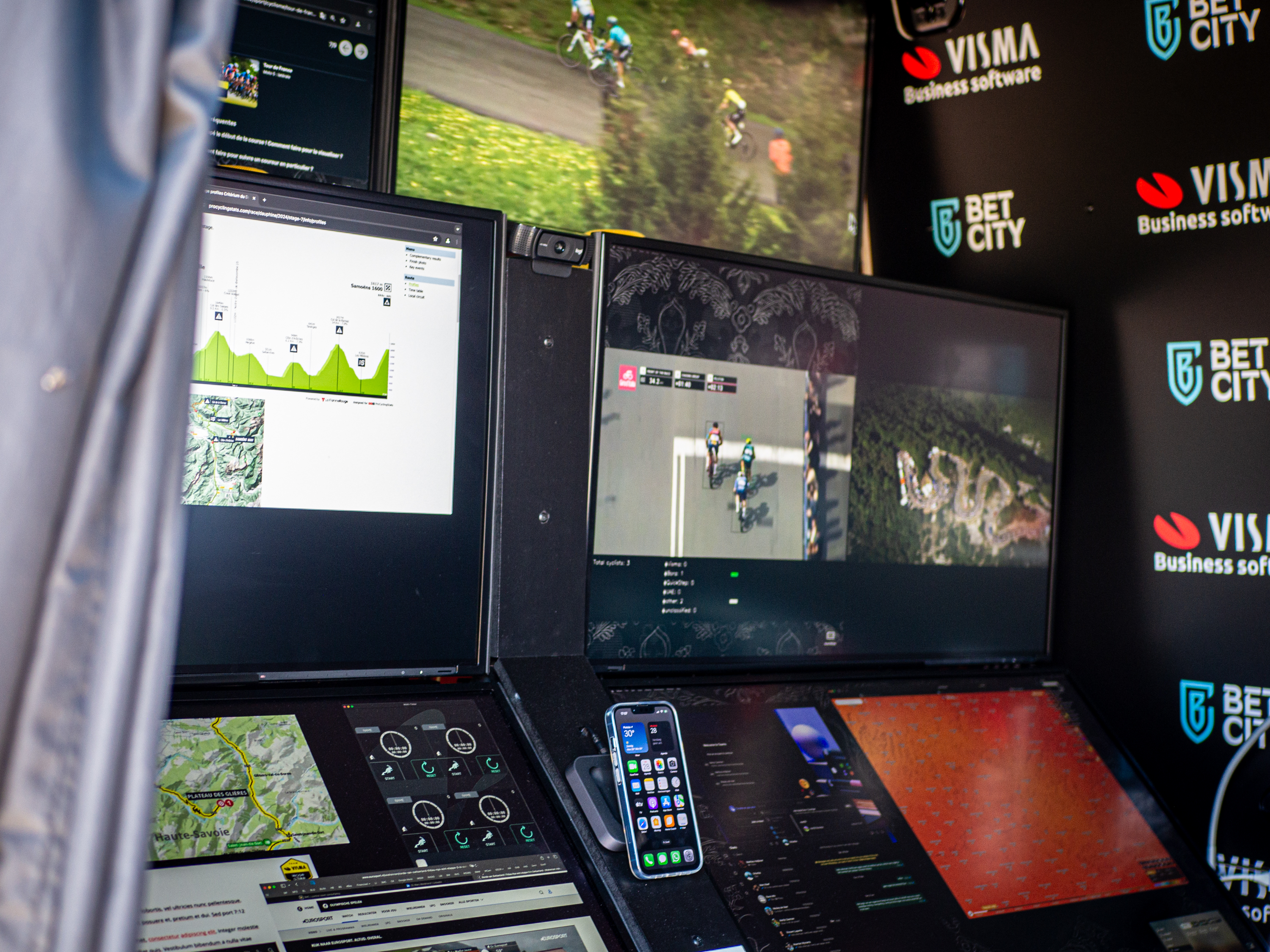
Much has been said about the legality of Visma-Lease a Bike’s all-new 'control room', and in recent days, the UCI has opened an investigation to look into it and banned it from TDF premises.
But what actually is it? When reacting to the UCI’s announcement of the aforementioned investigation, the team’s General Manager, Richard Plugge, said "they're welcome to come and visit.” The day before the tour kicked off in Florence, Cyclingnews visited the Visma hotel in Pistoia to do just that.
In the video below, the team's Head of Performance, Mathieu Heijboer, walks us through the setup and gives insight into how he thinks it compares to other teams.
We were welcomed into the Volkswagen Crafter van, almost encouraged even. For a team often coy about their technological innovations, this was a refreshing, if confusing stance. The team almost seemed to be trying to prove a point to the UCI. Regardless, I took the opportunity to eke out as much information as I could.
"What we really do not do, and really to emphasise that, is we do not capture anything from the bike, because it's illegal, we play according to the rules," Heijboer was at pains to point out. "The only thing we can do is use TV images and use everything that's publicly available."
Housed inside, the 'control room' comprises six computer monitors, plus an iPhone and two laptops. On each screen is a specific stream of information.
The top-left screen is split via six separate streams of TV cameras from various sources around the race, motorbikes and helicopters. To its right, a full-screen display shows the main television coverage.
Beneath those, the additional data starts to come into play. On the left, weather data from around the race course is split into four sections, and on the same monitor, data from ProCyclingStats shows the start list and Tour de France route information, but in a typical web browser that can presumably be used to find additional information about the riders or the route.
On the middle-right screen, an interesting piece of software is being employed. Put simply, this is an automatic jersey recognition software, which is overlaid on live television footage. The software counts the number of jerseys from each team in a picture, and continually updates as riders drop out of view, or out of the group entirely. The tally is then listed beneath, enabling those in the van to see how many riders each team has in a breakaway or a peloton.
The bottom pair of monitors is a combination of more information and communication, allowing the team to pass insight or instruction onto the team car. On the left, a stream from social media platform X (formerly Twitter) shows every tweet about the race as soon as they are posted. For my visit, the stream was set up for the recent Critérium du Dauphiné, but Heijboer says this is simply set up as an example, and it wasn't used at the Tour de France warm-up race.
Right of this, information from VeloViewer adds to the route information from ProCyclingStats, alongside a multi-clock timer app, which allows the team to count seconds between groups of riders, or run the maths on chasing down a breakaway.
Right of this, on the bottom right screen, is a second WhatsApp chat, presumably connected to the account of the person sitting in the right-hand chair. On the same screen, a Teams app is open, which connects the control room to the team car. A webcam sits between the monitors to send a video stream when needed.
At least three Apple Mac Mini computers power the setup, which also comprises a host of speakers, as well as video conference peripherals such as desktop microphones.
Heijboer explains that the van won't be used for every stage, but that they will hand-select important stages to use it.
Paid for and designed by sponsors Bet City and Visma, the control centre has been described in many ways. Some say it's a positive step for cycling with a safety aspect of sharing important hazards that lie ahead, others say the opposite, and that it is another nail in the coffin for the romanticism and traditionalism of our sport.
Some have even touted it as simply a marketing ploy, making public the techniques that countless other teams are already employing, and have been for some time.
"A lot of teams will have coaches behind the TV who will call in with the sports directors," Heijboer explained. " To be honest, this is not really different to that. We just bring it all to one place.
"Every self-respecting team will have a coach on the couch watching TV, and if they see something on television that they don't see on the race car, they will contact them."







